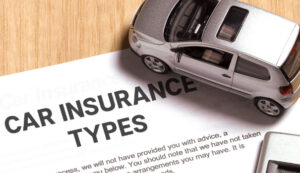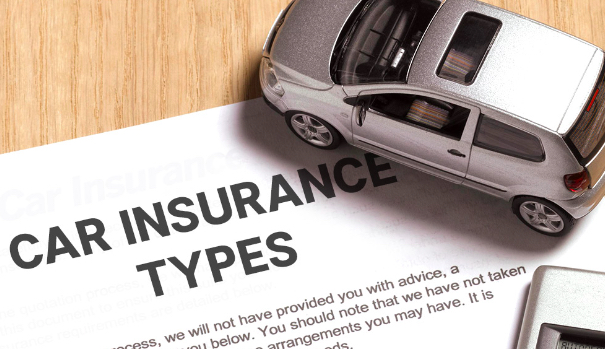Nicholson Insurance protects you and your car against financial loss. You pay a premium, usually monthly, to get coverage. The cost of your premium depends on your credit, driving record, and how much coverage you buy. You can lower your rate by agreeing to a higher deductible, which you must pay before the insurer pays a claim.
Liability
 Liability auto insurance covers the costs related to an accident that you cause, including damage to other people’s vehicles and property. It also pays for their medical expenses up to the limits of your policy. Most states require that drivers carry a certain amount of liability coverage.
Liability auto insurance covers the costs related to an accident that you cause, including damage to other people’s vehicles and property. It also pays for their medical expenses up to the limits of your policy. Most states require that drivers carry a certain amount of liability coverage.
Your deductible is the amount you pay out of pocket before your auto insurer starts to cover your claim. It is a type of self-insurance that helps keep your premiums low. Your deductible can vary depending on your state’s laws and your coverage limit.
When you get a quote, the insurance company will need certain information from you in order to determine your risk and make a quote. This includes information such as your age, gender, driving record and the number of miles you drive each year. It will also need to know if you have any accidents or tickets on your record.
If you provide inaccurate or incomplete information, it could lead to a higher premium or even denial of coverage. This is why it is so important to always give accurate and complete information when filling out an application or answering questions from an agent.
The first page of your policy, typically called the declarations page, has a summary of the coverages and limits you have selected. It also lists the fees and charges you will be responsible for, such as the deductible and your premium payment terms.
A report from the Department of Motor Vehicles listing accidents or violations on your driving record.
An estimate of the value of your car based on the model, year, mileage and condition. An independent appraiser usually conducts this appraisal.
The dollar limits on your liability, personal injury protection, uninsured/underinsured motorist and towing and labor coverage are outlined on the first page of your policy, called the declarations page. These limits are the maximum amount your insurer will pay, and you will be responsible for any expenses that exceed these amounts. These limits can be raised by contacting your insurance provider. However, increased limits will typically result in a higher premium.
Comprehensive
Comprehensive car insurance reimburses you for the cost to repair or replace your vehicle if it is damaged by non-traffic related events such as hail, fire and vandalism. It also covers theft. It is usually optional, but many lenders require it if you’re leasing or financing your car. Comprehensive coverage can be worth the extra expense if you have a hard time coming up with the cash to pay for a new car if something happens to your current one.
It’s helpful to think of collision and comprehensive coverage as separate policies, with collision covering accidents that occur when you are driving and comprehensive covering any other kind of damage your vehicle might experience. However, it’s common for insurers to bundle both into what is known as a “full coverage” policy.
Collision and comprehensive insurance are not required by any state, but the majority of drivers purchase both because they provide valuable protection. Both coverage types have a specific deductible that you must pay out-of-pocket before your insurance company starts paying on a covered claim. The higher the deductible you choose, the lower your premium will be.
Whether or not comprehensive and collision coverage are worth it for you depends on the value of your car, your financing situation and where you live. Remember that neither of these coverages reimburse you for medical or legal costs tied to an accident, which is covered by liability insurance.
You may be able to save some money by removing comprehensive or collision coverage from your car insurance policy, but this is a personal decision that you must make. A good rule of thumb is to look at your car’s current market value and the amount you would receive if it was declared totaled, and then decide. For example, if your car is old and worth less than ten years, you might consider dropping collision coverage because it is no longer worth the investment. On the other hand, if you’re still making payments on your car and you wouldn’t be able to afford to buy a replacement, you might want to keep collision coverage.
Collision
As its name implies, collision coverage pays to repair or replace your car after it collides with another vehicle or an object, such as a tree or lamppost. It also may pay to fix your car if it rolls over in an accident, and it covers damage from hit-and-run drivers or cars driven by uninsured motorists.
A collision insurance deductible is the amount you agree to pay out-of-pocket before your insurer starts paying on a covered claim. You and your agent choose the deductible when you build your policy. Generally, the higher the deductible you select, the lower your premium will be.
In some states, you can add a waiver of your collision deductible to your policy. This option reduces your premium but increases the amount you would have to pay out-of-pocket in the event of an accident.
When considering whether to buy collision coverage, consider your car’s value and the cost of your deductible. If your car is old and has low market value, you might decide it’s worth cutting this coverage from your policy. However, if you’re still making payments on your vehicle or it is new enough that you could easily afford to replace it, keep this coverage.
Your lender might require you to carry collision insurance if you finance or lease it. It’s a good idea to have it anyway because it helps protect you from having to pay for the full cost of repairing or replacing your car in the event that you are at fault for an accident. You can still get a loan to purchase or lease a new or used vehicle without this type of coverage, but it’s usually more expensive than the same vehicle financed or leased with comprehensive or liability coverage. For this reason, you might want to consider adding comprehensive coverage instead of collision if you plan to finance or lease your next vehicle. It’s a great way to save money, get more peace of mind and protect your investment.
Uninsured/Underinsured Motorist Coverage
Some drivers choose to purchase uninsured/underinsured motorist coverage as an add-on or as part of their auto insurance policy. These types of coverages are designed to help you pay for your expenses in the event of an accident with an uninsured driver or a driver who doesn’t have enough liability car insurance.
Essentially, this type of coverage helps fill in the gaps if you’re involved in an accident with a driver who doesn’t have any insurance at all or who has minimal liability insurance that may not cover your expenses. You’ll be able to file a claim with your provider, and in most cases the same insurer will pay out on an uninsured/underinsured claim as they would for a standard liability policy.
There are some states that require drivers to have UM/UIM coverage, and others allow you to stack this type of insurance. Stacking refers to adding the UM/UIM limits from multiple vehicles or policies under one umbrella, which can help you increase your overall coverage limit. In general, it’s a good idea to carry the same limit for uninsured/underinsured insurance that you have for liability. Your Farmers agent can help you better understand these policies and determine what coverage options are best for your situation.
Uninsured/underinsured coverage is different from uninsured motorist property damage (UMPD), which pays for damages caused by drivers who do have liability insurance but whose policies don’t meet your needs for an adequate amount of coverage. UMPD can help you repair or replace your vehicle, but it may not be enough to cover the full cost of any injuries.
Both UM/UIM and UMPD are often bundled into a single policy, so you shouldn’t have to worry about purchasing them separately. It’s also important to note that this is only one of many factors that go into determining how much your policy costs. Other factors include your driving history, credit score and other third-party reports. It’s always a good idea to compare quotes and consider your personal needs when shopping for a car insurance policy. Your Farmers agent can provide more information on coverage options, deductibles and discounts to help you decide what kind of policy is right for you.



